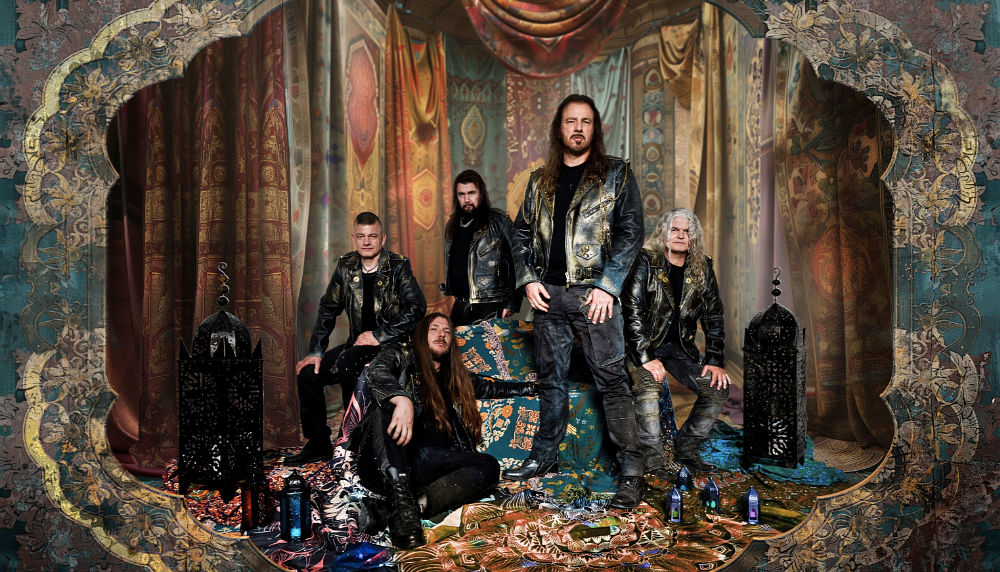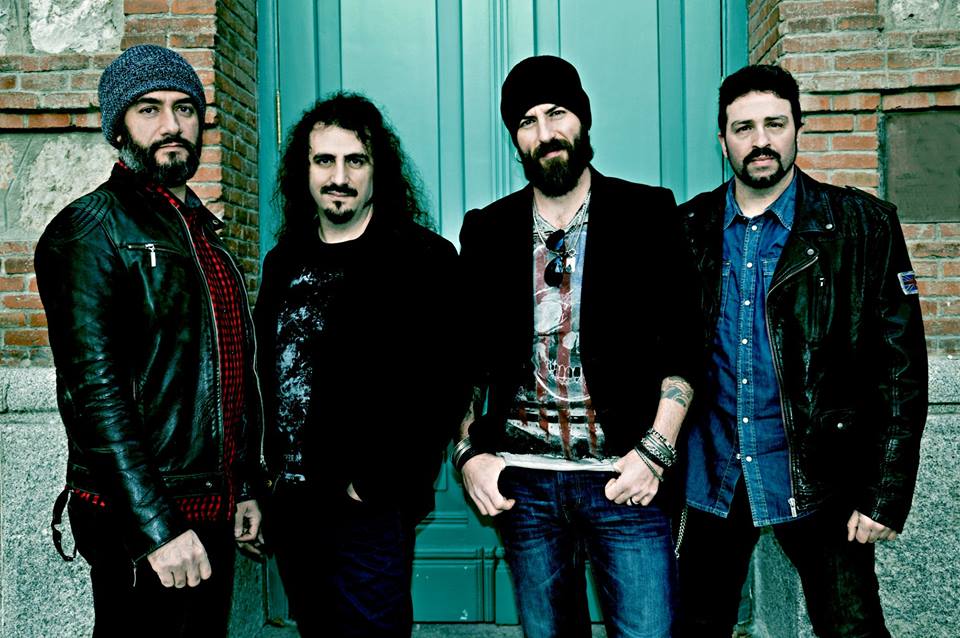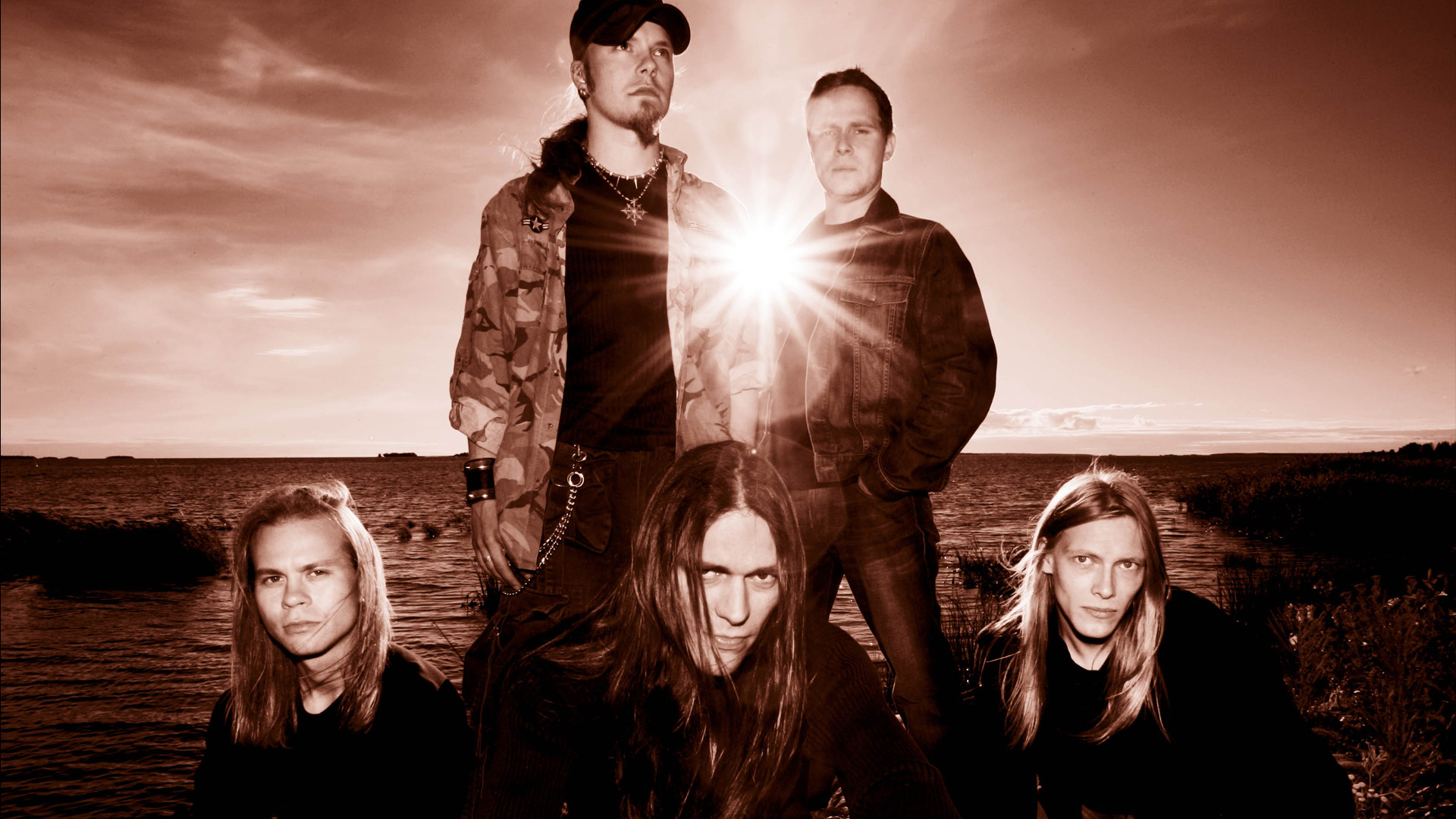One of the most overlooked bands to storm out of Germany, Brainstorm are veteran traditional/power metal stalwarts who have been delivering quality heavy metal since 1997 with their aptly titled debut Hungry. I first remember hearing about them in 2001 from Dr. Metal’s Metal Meltdown show on WRUW in Cleveland (I’ve mentioned him before, particularly in my biographical essay, but he was a huge influence on me in terms of introducing power and trad metal bands from Europe). The band’s then newly joined vocalist Andy B. Franck (the cadence of his full name always makes me smile) was on the show and they were talking about the new album, his other band Symphorce (also underappreciated), and generally just shooting the breeze about anything and everything. Dr. Metal’s interviews were always excellent, but Andy was particularly engaging, humorous and easy going, and I not only liked the tracks I heard being played, but became an instant fan of the band just by virtue of wanting to root for the guy.
Personality aside, he’s been one of the most unheralded great vocalists in power metal for the past two plus decades, a model of consistency like fellow Germans Mille Petrozza and Klaus Meine (something in those Rhine fed waters I guess?). But it wasn’t just Franck that was the draw, because guitarists Torsten Ihlenfeld and Milan Loncaric dished out a heavier, beefier take on the Judas Priest-ian twin guitar attack, with thundering, rumbling riffage and tasteful harmonized leads. Ihlenfeld and Franck seemed to immediately gel as songwriting partners (alongside contributions from the rest of the band), and formed the core of a songwriting partnership that has carried the band up to the present day. They just released a genuinely incredible album this year in Plague of Rats, one that could easily claim the title of the best in their discography. But rather than just discuss that album, I thought it might be better to properly introduce newcomers to Brainstorm and their intimidatingly lengthy discography via this recurring feature I’ve employed previously to talk about other bands I’m passionate about. I’ve picked out ten songs from their discography that I think might make a fan out of you, and am presenting them below in chronological order. So get some bratwurst, some schnitzel, and die Biere, and check out the bangers below!
“Tell-Tale Heart” (Hungry, 1997)
The early years of Brainstorm featured singer Marcus Jürgens (ex-Pump, TwentyDarkSeven) in the lineup, whose vocal approach was a little rougher around the edges and lighter in tone than Andy B Franck (who at this time was still in his pre-Brainstorm band Ivanhoe and only on the verge of forming Symphorce, his other long term ongoing concern). It’s fair to say that these first two albums Hungry and Unholy didn’t gain much traction beyond German and European trad metal circles, but they did enough to garner the notice of Metal Blade records who helped the band breakout continentally on 2000’s Ambiguity. Jürgens does have a little John Bush thing happening vocally that I’ve always found interesting, like Brainstorm unwittingly grabbed an American posing as a German for the job, but he’s a great fit for where the band was at this time. They were finding their footing, and you can hear shades of the more richly melodic, quasi-epic direction they’d continue on later, but for the most part, this is straight forward meat and potatoes heavy metal. This gem, buried in the middle of their debut was always the standout on both albums for me, a legitimate rhythmic headbanger with a knock out hook.
“Blind Suffering” (Metus Mortis, 2001)
The first genuine fan favorite in the band’s history, “Blind Suffering” has been a concert staple since Metus Mortis dropped in 2001 and made waves over the European metal mainland. Just a flat out bruiser, that memorable drum pattern intro and one of the band’s most straight to the gut riff progressions to follow. This was Andy B Franck’s second album with the band, and his signature approach within the band’s style really came to gel here, that being a blended Udo-Mustaine-Kiske booming bellow that he’d layer up in the choruses to elevate their impact. It worked spectacularly well, so well in fact that he never really stopped doing it, and it gave the band’s sound a splash of the grandiose and epic pomposity that fellow countrymen Blind Guardian were of course serving up in full course platters by this point in their career. Was bummed to notice that they’d finally left this off their setlists in recent years, I’m assuming because the discography got so long as to edge it out — they should bring it back though, its an all time classic.
“The Leading” (Soul Temptation, 2003)
One of a pair of bangers from the band’s breakout album Soul Temptation, “The Leading” is one of the band’s best marriages of hooky and heavy. Built on meat and potatoes heavy chugging with a splash of prog complexity in the riff progressions, I always thought that this was the era where the band sounded closest to their peers in Tad Morose, particularly around this same era when the latter were releasing their bonafide masterpiece with Urban Breed in Modus Vivendi. Pair that with bands such as Kamelot, Circle II Circle, and Manticora releasing incredible albums full of darker toned power metal that was heavier in tone and in spirit, and Brainstorm found themselves in the midst of a full blown sea change in what was considered de rigueur in power metal circles. Yet Franck’s vocals provide soaring uplift, a deft demonstration of his rarely deployed higher register that showed some classic power metal had rubbed off on this band of Germans. This is one of those old power metal jams that just randomly will pop into my head at any odd moment, a hook that is likely burned into my brain forever.
“Shivas Tears” (Soul Temptation, 2003)
The iconic track from Soul Temptation, and the likely inspiration for its surreal cover art, this gem has always been characterized by the prominence of Miro Rodenburg’s layered, lush keyboard arrangement. He had been working with the band since Metus Mortis, but really got to go hog wild for the first time here, bringing an Indian-flavored arrangement into the proceedings to complement the song’s lyrical theme. The juxtaposition between its floral, incense smoke perfumed notes and the pummeling, mechanistic riffs was entrancing and hypnotic. My favorite association with this tune is their epic show opening performance of it at Wacken 2004, thankfully immortalized on professionally shot video. Do yourself a favor by settling in to watch that live show, because they are on fire and Franck is as convincing and effective a frontman as power metal during that era, easily one of my favorite Wacken sets of all time. That’s a crowd that only partially knows the band, and they’re all headbanging along to this tune because how the hell could you not?
“Fire Walk With Me” (Downburst, 2008)
The band had a slight misstep with 2005’s Liquid Monster, which although boasting the band’s first charting single “All Those Words” (top five in Hungary) largely fell short of the standards set on the preceding Franck fronted albums. Our first taste of their rebound three years later on Downburst was this absolute banger of a single in “Fire Walk With Me”, with a direct, hard hitting approach that shook off some of the choir/orchestral excesses of Liquid Monster. This song is emblematic of the album, getting back to the core of what Brainstorm did so well in stuffing head noddingly catchy vocal lines amidst thunderingly heavy guitars. The rhythmic call and response gang vocals here always reminded me of a thrash approach as well, something akin to Anthrax or Armored Saint, and they’re a vivid reminder here that Ihlenfeld and Loncaric have been solid backing vocalists throughout the history of the band. I imagine hardcore Brainstorm fans will argue that there’s deeper cuts on Downburst worthy of recognition (one of them is below), but I remember how much this single fired everyone up (including me) back in the day, and that’s worth its inclusion here.
“How Do You Feel” (Downburst, 2008)
It’s interesting how in retrospect there’s a growing consensus that Downburst is arguably the bands best album — though I feel that some might look back further to Metus Mortis or Soul Temptation (particularly the band themselves regarding the latter, having given a direct nod towards it on their recent new album). For my part, I waffle between all three but having dived into Downburst once again for this feature, I’m reminded of just how awesome this album is, running lean throughout, with a sharper sense of balancing keyboard elements with a return to a heavier hitting style, and a production that might be their career best. And this tune in particular I think exemplifies all those aforementioned details that the band got right on the album. I love the Dokken-ian riff progressions during the verses, particularly after the chorus with that gorgeously melodic outro solo. Franck’s deft vocal melodies veer between smooth emotiveness, and that rugged, throaty sandpaper growl that gives the chorus its grit and grime. My favorite song off this incredible album, this is the album to start with from the band for newcomers.
“The Conjunction of 7 Planets” (Memorial Roots, 2009)
A deep cut on one of the band’s most divided albums in Memorial Roots, “The Conjunction of 7 Planets” saw the band sharply moving into more lengthy, progressive territory. Like the album as a whole, there was less of the razor sharp attacking riffs heard on Downburst and more of a grittier, earthen tone to these songs, matching the album artwork and title at that. This tune took awhile to grow on me, with its slowly building, patience requiring verse passages and longer flowing refrain sequence, but it was the lyrical subject matter about religious end time prophecies and their usage to subjugate believers with fear that really stood out. Brainstorm always had competent lyrics, but I thought the band elevated their game as whole on this album. An interesting note on the production, because the earthen toned, rounder edges throughout this album caused some debate among fans at the time of its release, and this was maybe a result of the producer Sascha Paeth favoring that style as a whole (recall that the Edguy and Avantasia releases he produced around that time were also mixed in this vein). The band seemed to agree with those fans because in 2016 they released a remixed version of this album (Memorial Roots Re-Rooted) remixed by their longtime producer Achim Köhler who had been with them since the Metus Mortis days. Tellingly, the band kept on working with Miro for keyboard parts but never returned to Paeth for production or mixing duties, eventually switching to Orden Ogan’s Seeb Levermann, for good it seems.
“Ravenous Minds” (Midnight Ghost, 2018)
We fast forward almost a decade in time to 2018 and the release of Midnight Ghost, the band’s first album with Levermann handling production and in many ways assisting the band in revitalizing their sound to astonishing success. The decade since the last track on this list yielded three fairly middle of the road albums, pockmarked with some decent songs, but admittedly some filler bloat, and if streaming numbers are anything to go by, they were largely only listened to by diehard fans of the band, failing to pull in new listeners. That certainly wasn’t the case with “Ravenous Minds”, the biggest song of the band’s career and their first million plus (nearly two million now) streaming hit. Whatever it was about collaborating with Levermann that sparked the band’s creative battery, it filtered throughout the album and yielded one of the strongest albums of their career, as well as the dawning of the more modern sounding Brainstorm that has been their sonic modus operandi ever since. The stomping yet surprisingly epic, Blind Guardian-esque monster of a hook that anchors this song was one of the most earwormy moments in the band’s discography, and easily one of the most vocal melody dependent. Over two decades singing aggressive melodic metal, Franck was proving that he hadn’t lost a step and was only getting better with age.
“Glory Disappears” (Wall of Skulls, 2021)
While “Ravenous Minds” is the band’s most popular song, in second place is the absolutely incredible “Glory Disappears” off the subsequent album Wall of Skulls three years later. If not my favorite Brainstorm tune, easily in the top three, I think the epic, ultra satisfying chorus at work here speaks for itself, this song landing the top five of my best songs of 2021 list. Its also a bit of an anomaly on Wall of Skulls itself, being one of the few mid-paced tunes on an album that largely saw the return of the band’s more uptempo, thrashier sound return after a long spell of mostly mid-tempo paced albums. I remember speculating at the time of its release if the Covid induced layover lit a fire under the band’s you know what, because there’s a renewed vigor and appetite for all things heavy and aggressive on the album as a whole. On “Glory Disappears” however, Franck and company wielded this energy differently, a straight to the emotional gut slice of power metal melodrama built on a hook so potent that they unleashed it thirty seconds into the song. The dual harmony laden guitar solo that nearly serves as a complete outro unto itself is some of Ihlenfeld and Loncaric’s most inspired work. One of those songs that any power metal band would kill to have in their arsenal.
“Garuda (Eater of Snakes)” (Plague of Rats, 2025)
Up now to the present day, where Brainstorm has released a monstrous, year end list contending caliber new album in Plague of Rats, their third legitimately very good to great album in a row. To say we’re in the midst of a late career renaissance by one of German power metal’s most enduring bands is an understatement, because the band is experiencing not only renewed creative inspiration, but watching it translate into their most commercially successful period as well. Not bad for a bunch of dudes who started in 1989 and resolutely stuck to their guns and musical passion for metal through waves and trends that came and went. Regarding “Garuda”, this is a knowing throwback to another song on this list in “Shiva’s Tears” in Indian spirituality and mythology, this time with the tasteful incorporation of Indian melodies via a sitar accompaniment. I love Franck’s choices in vocal melody design here, the delayed effect he employs on the chorus by waiting a half second on delivering “…Garuda!” adds a subtle bit of complexity to the timing there that just hits. I love that this far into their career, they’re now more open than ever to trying new things, such as the Eluveitie esque folk instrumentation that adorns “The Shepherd Girl” later on the album. They’ve covered such a wider breadth of styles on these past three albums that its hard not to consider also recommending them to newcomers as a point of entry to the band.






